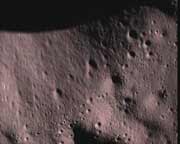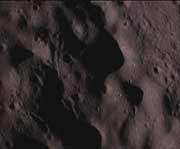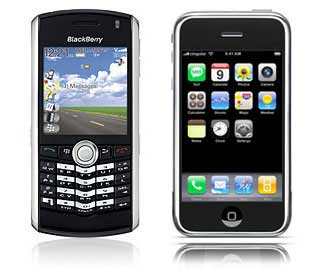
In a memorable four-day span, Yuvraj Singh has banished self-doubts and embraced sunshine.
His second century (118) on the trot and 10th overall in One Day Internationals allied with some handy left-arm spin (four for 28) that crackled on a sluggish pitch, helped India defeat England by 54 runs in the second ODI of the seven-match series at the Maharani Usha Raje Stadium here on Monday. India leads the series 2-0.
Raina does a Jonty
Chasing India’s 292 for nine in 50 overs, England scored 238 in 47 overs. England was ambushed in the very first over as Suresh Raina’s ‘Jonty Rhodes’ moment — an accurate throw unleashed with airborne momentum — left Ian Bell stranded.
Opener Matt Prior (38) and Owais Shah’s (58, 78b, 8x4, 1x6) second-wicket partnership of 96 runs that stretched into the 24th over, built a sedate structure rather than a launch-pad.
Shah reached his fifty with a six off Yuvraj but the ‘Man-of-the-Match’ breached the partnership. Delivering wide off the crease and slinging it across, Yuvraj’s angle pushed Shah and Prior to their backfoot and as pads were ruffled and stumps knocked out, England was down for the count.
Belated sparkle
Skipper Kevin Pietersen (33) and Andrew Flintoff (43, 35b, 4x4, 3x6) lent some belated sparkle in their 74-run fourth-wicket partnership, which included a productive third power-play from the 33rd to 37th overs yielding 59 runs. Flintoff waded into a Harbhajan over with three sixes that melded power and placement. However Yuvraj scalped Flintoff and Pietersen as England wilted.
In the morning after India opted to bat, Stuart Broad scythed through the top-order on a pitch of variable bounce while the batsmen failed to recalibrate their bat-speed.
Virender Sehwag chopped one onto his stumps, Raina played a wee-bit early and Rohit Sharma hooked without getting used to the slowness of the surface as Broad enjoyed a first spell of 5-1-14-3.
Yuvraj, declared fit in the morning, was just strapping on his pads when Rohit started his walk back with India struggling at 29 for three after just 26 minutes of play.
Testing Yuvi, but…
Yuvraj shuffled out, touched the turf in a mark of respect and as he settled into his stance, Broad and Flintoff angled across a few short-pitched deliveries, tempting the pull to test the southpaw’s sore back as he tried to swivel.
Yuvraj (118, 122b, 15x4, 2x6) paused his back-lift and evaded. It was ungainly but he had taken a deep breath and when he exhaled with a four to fine-leg off a Flintoff no-ball and then slammed the free-hit high over mid-wicket, Mexican waves resumed in the stands.
His partner Gautam Gambhir (70, 76b, 6x4, 1x6) meanwhile tucked in to a half-volley from Harmison and when he cover-drove Flintoff through an off-side manned by four men, the 134-run fourth-wicket partnership off 136 deliveries, shed its wait-and-watch mode and galloped ahead.
Yuvraj then cut a fine arc skywards as he hoisted Paul Collingwood for six. Runs flowed as the England seamers tried to bounce him, hoping for a tame catch at short mid-wicket while Yuvraj kept hitting over the in-field.
Eventually Gambhir dragged one from Pietersen onto his stumps while Yuvraj fell in the slog after a splendid hundred, a knock that came after his unbeaten 138 at Rajkot.
Skipper M.S. Dhoni and the tail neither dropped anchor nor found their big hits but there was no denying Yusuf Pathan (50 n.o., 29b, 2x4, 4x6) as he struck two sixes in the final over bowled by Harmison and helped India finish with a total that looked improbable before Yuvraj took flight.
SCOREBOARD
India: G. Gambhir b Pietersen 70, V. Sehwag b Broad 1, S. Raina c Samit b Broad 4, Rohit Sharma c Shah b Broad 3, Yuvraj Singh c Prior b Broad 118, M.S. Dhoni b Collingwood 15, Yusuf (not out) 50, Harbhajan Singh (run out) 8, Zaheer Khan (run out) 1, R.P. Singh b Harmison 4, Munaf Patel (not out) 0; Extras (b-3, lb-9, w-4, nb-2): 18; Total (for nine wkts. in 50 overs): 292.
Fall of wickets: 1-4, 2-15, 3-29, 4-163, 5-206, 6-239, 7-258, 8-261, 9-274.
England bowling: Anderson 6-0-26-0, Broad 10-1-55-4, Flintoff 9-0-49-0, Harmison 7-1-50-1, Samit 5-0-37-0, Collingwood 8-0-43-1, Pietersen 5-0-20-1.
England: I. Bell (run out) 1, M. Prior b Yuvraj 38, Owais Shah lbw b Yuvraj 58, K. Pietersen b Yuvraj 33, A. Flintoff lbw b Yuvraj 43, P. Collingwood c & b Harbhajan 2, Samit Patel c Gambhir b Sehwag 20, Ravi Bopara c Raina b Yusuf 3, S. Broad b Sehwag 22, S. Harmison st. Dhoni b Sehwag 6, J. Anderson (not out) 1; Extras (lb-2, w-6, nb-3); 11. Total (in 47 overs): 238.
Fall of wickets: 1-6, 2-102, 3-109, 4-183, 5-184, 6-187, 7-191, 8-222, 9-233.
India bowling: Zaheer 8-1-37-0, Munaf 7-0-31-0, R.P. Singh 5-0-49-0, Yuvraj 10-0-28-4, Harbhajan 10-0-45-1, Sehwag 5-0-28-3, Yusuf 2-0-18-1.







































 Amongst a series of historic firsts, the landing also makes the MIP the first Indian built object to reach the surface of the moon.
Amongst a series of historic firsts, the landing also makes the MIP the first Indian built object to reach the surface of the moon. The hard landing also successfully concluded the country's first mission to dispatch a probe to the moon's surface from a spacecraft orbiting the moon. Data from this sub-mission will be of immense importance when ISRO sends Chandrayaan-2 to the moon a few years from now.
The hard landing also successfully concluded the country's first mission to dispatch a probe to the moon's surface from a spacecraft orbiting the moon. Data from this sub-mission will be of immense importance when ISRO sends Chandrayaan-2 to the moon a few years from now. After Chandrayaan-1's entry into its planned lunar orbit on 8 November 2008, the orbital height was reduced in steps to its intended operational altitude of 100 km from the lunar surface.
After Chandrayaan-1's entry into its planned lunar orbit on 8 November 2008, the orbital height was reduced in steps to its intended operational altitude of 100 km from the lunar surface.




 Chandrayaan-1 has reached its destination. The Indian spacecraft is now orbiting the moon over its poles at an altitude of about 100 km.
Chandrayaan-1 has reached its destination. The Indian spacecraft is now orbiting the moon over its poles at an altitude of about 100 km.


